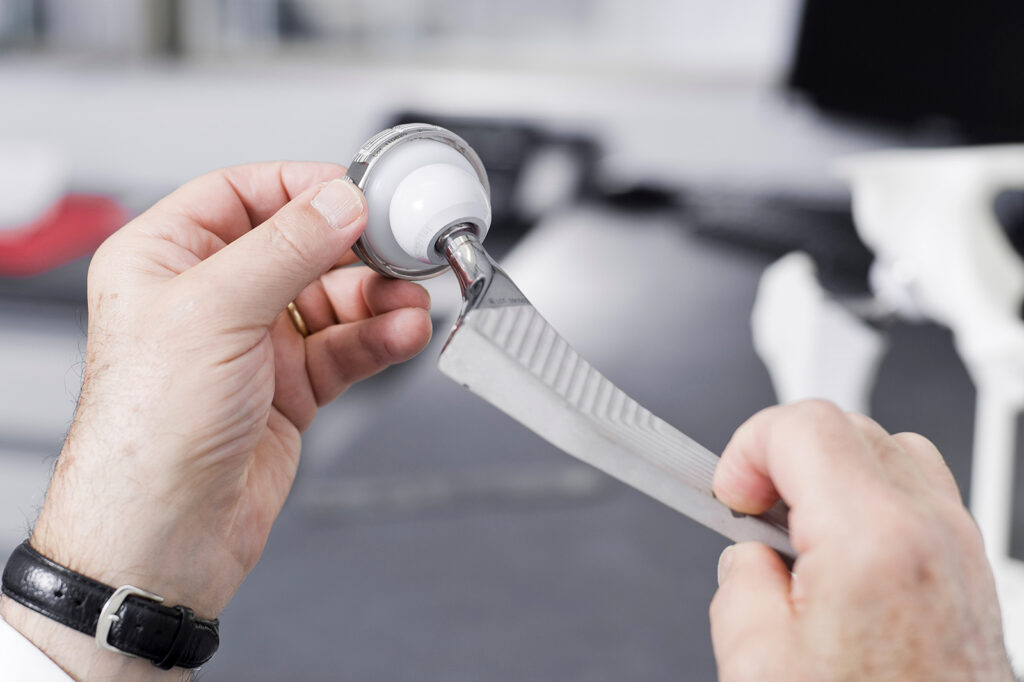When most people think of hip replacement surgery, they imagine an elderly person who can barely walk due to severe joint pain. However, hip replacements are not just for the elderly. Young adults and even children can benefit from this life saving procedure. This blog post will discuss the history of hip replacements and how they have evolved over the years. It will also cover ways to prevent joint degradation in the first place, so you don’t need hip replacement surgery.
History of Hip Replacement

Hip replacement surgery is not a new procedure. It was first developed in the early 1800s by a French surgeon named Paul Duhamel. However, it wasn’t until the mid-1900s that hip replacements began to be commonly used. The first successful hip replacement surgery was performed in 1953 by an orthopedic surgeon named John Charnley.
Since then, hip replacement surgery has become common for people with severe joint pain. The surgery involves replacing the damaged hip joint with an artificial implant. This implant is made of metal and plastic and is designed to mimic the function of a healthy hip joint.
Depending on the patient’s needs, several different types of hip implants can be used. The most common type of hip implant is the total hip replacement, which replaces both the ball and socket of the hip joint. Other types of implants include partial hip replacements, which only replace the ball portion of the joint, and hemiarthroplasties, which only replace the socket portion.
The surgery is relatively simple and can be performed as an outpatient procedure. The recovery time is usually around six weeks, although it may take longer for some patients to fully recover.
Advances in Hip Replacement Surgery
Durable Materials are used to Make the Implant Materials

Newer types of implants are made of more durable materials and can last longer than traditional hip implants. Some of these newer implant materials include ceramic and metal alloys. These materials are less likely to wear down over time and can provide a longer-lasting solution for patients.
Some newer implant designs allow for a more natural range of motion. This can be beneficial for active patients who want to maintain their lifestyle after surgery.
Use of Minimally Invasive Techniques
Another recent advance in hip replacement surgery is the use of minimally invasive techniques. With these techniques, the surgeon makes smaller incisions and uses special instruments to insert the implant. This results in less tissue damage and a shorter recovery time.
Some minimally invasive hip replacement surgery benefits include less blood loss, less pain, and a shorter hospital stay. Additionally, patients with this type of surgery can often return to their normal activities more quickly than those with traditional hip replacement surgery.
Robotics-Assisted Surgery
Robotics-assisted surgery is another newer advance that is being used in hip replacement surgery. With this type of surgery, a surgeon uses a computer to control special instruments during the procedure. This allows for more precise implant placement and can result in quicker, easier surgery.
Patients who have robotics-assisted surgery often have a shorter hospital stay and a quicker recovery. Additionally, they are less likely to experience complications after surgery.
Enhanced Recovery After Surgery (ERAS) Protocol

The ERAS protocol is a new approach to hip replacement surgery designed to help patients recover more quickly. This protocol involves a team of surgeons, nurses, and other medical professionals working to provide patients with the best possible care.
Some of the components of the ERAS protocol include pre-operative education, early mobilization, and the use of pain-reducing medications. Additionally, patients who follow the ERAS protocol can often go home sooner and have a shorter hospital stay.
Alternative Treatments
In some cases, hip replacement surgery may not be the best option for a patient. In these cases, alternative treatments may be recommended. Some of the alternative treatments that may be considered include physical therapy, weight loss, and lifestyle changes. These treatments can help to reduce pain and improve function without the need for surgery.
Prevention of Joint Degradation
Exercise

One of the best ways to prevent joint degradation is to exercise regularly. Exercise helps to keep the joints healthy by lubricating them and improving blood circulation. Exercise can also help strengthen the muscles and connective tissues around the joints.
Regular exercise is especially important for people who are overweight or obese. Carrying extra weight stresses the joints, leading to joint degradation. Additionally, people with a family history of joint problems should exercise regularly to help prevent the onset of these problems.
Exercise is also beneficial for people who already have joint problems. Exercise can help to slow the progression of joint degradation and improve symptoms. Some beneficial exercises for joint health include walking, swimming, and biking.
It is important to warm up before exercise and cool down afterward. This helps to prevent injuries and makes exercise more comfortable. People with joint pain should talk to their doctor before starting an exercise program. A physical therapist can also help to create a safe and effective exercise program.
Diet
Diet is also important for joint health. A healthy diet can help reduce inflammation and keep the joints healthy. Some of the best foods for joint health include fruits, vegetables, fish, and olive oil. These foods are all rich in anti-inflammatory nutrients that can help to reduce joint pain and swelling.
It is important to avoid processed foods and foods that are high in sugar. These foods can trigger inflammation and make joint pain worse. People struggling to eat a healthy diet should talk to a registered dietitian. A dietitian can help to create a healthy eating plan that meets your individual needs.
Smoking Cessation
Smoking is also harmful to joint health. Smoking cigarettes can damage the joints and lead to joint degradation. Smoking makes it harder for the body to heal after an injury. This means that people who smoke are more likely to need joint replacement surgery than people who do not smoke.
People who smoke should talk to their doctor about ways to quit. Many resources are available to help people quit smoking, including counseling and medication.
Stress Reduction

Stress can also contribute to joint pain. When people are stressed, their bodies produce more stress hormone cortisol. This hormone can increase inflammation and make joint pain worse.
Many ways to reduce stress include exercise, meditation, and deep breathing. People should find what works best for them and try to incorporate stress-reducing activities into their daily routines. If you struggle to reduce stress on your own, talking to a therapist can be helpful. A therapist can help you identify and address the sources of your stress.
Proper Joint Alignment
Proper joint alignment is also important for preventing joint degradation. When the joints are properly aligned, they are less likely to experience wear and tear. People can maintain proper joint alignment by practicing good posture and using ergonomic furniture. People should avoid sitting or standing in the same position for long periods.
Regular Medical Checkups
Regular medical checkups are also important for joint health. A doctor can identify early signs of joint problems during a medical checkup and provide treatment. People should see their doctor for regular checkups, especially if they have risk factors for joint problems, such as family history or obesity.
During a medical checkup, the doctor will usually ask about your symptoms and perform a physical examination. The doctor may also order tests, such as x-rays or blood tests, to further assess your joint health.
Hip replacement is a lifesaving procedure that has helped millions of people live pain-free lives. The history of hip replacement is long and filled with major milestones. Today, there are many options for hip replacement, and the procedure continues to evolve. With proper care, most people with hip replacements can enjoy a good quality of life.

